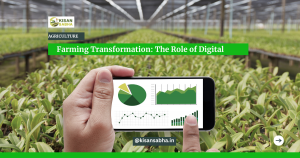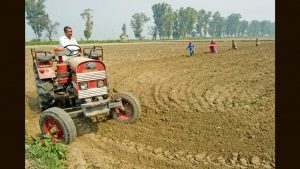Soil is the foundation of life on land. It is a complex ecosystem of fungi, bacteria, microorganisms, and insects. This living system facilitates plant nutrient uptake and water management. However, conventional industrial farming often depletes soil resources without replenishing them. sufficiently full As a result, carbon levels are greatly degraded, and overall soil health is.
These damaging practices disturb the delicate balance of the soil ecosystem. Reduces its ability to support plant growth and maintain environmental stability. and the consequences include decreased soil fertility. increased erosion and the ability to separate carbon decreases To maintain and enhance soil health It is important to adopt sustainable agricultural practices with a focus on soil conservation—organic matter management and promoting biodiversity within the soil ecosystem.
By cultivating carbon-rich soil through ecological farming practices, we improve the soil food web, increase land productivity, enhance the flavor and nutrient density of produce, reduce pest pressure, maximize water retention, and vastly reduce dependence on chemical interventions. Additionally, robust soil carbon absorption helps mitigate climate change. Understanding and implementing these soil enrichment principles can truly regenerate land and ecological well-being.
The Role of Carbon in Soil Health
Carbon is the basic component of soil organic matter. The presence of carbon is an important indicator of soil fertility and health. When using this technology greenhouse gas emissions will be reduced. This is a process that reduces greenhouse gas emissions. Soil that is rich in carbon has several advantages.
- Soil high in carbon has many advantages.
- Enhanced ability to hold water
- Improved availability of nutrients
- Increased stability and structure of the soil
- Higher levels of microbiological activity
- Increased resistance to external stimuli
Also Read:- Nutritious Fruit Crops for Long-Term Farming
How to Increase Soil Carbon Levels?
- No-Tillage Practices:- Tilling disturbs sensitive fungal networks and decimates soil life while releasing stored CO2 back into the atmosphere. No-till practices using cover crops or mulch help sequester carbon, preserve soil structure, and protect biodiversity.
- Compost Applications:- Finished compost is a probiotic for soil, introducing immense biological diversity including beneficial bacteria, nematodes, arthropods, and dark fungi that build complex carbon bonds. Applying 1⁄2 to 1 inch of compost across beds maximizes microbial colonization and carbon conversion.
- Diverse Cover Cropping:- Broad spectrum cover crop mixes with 6+ plant families (e.g. grasses, legumes, mustard, buckwheat) establish underlying ecological networks before cash crops. Their balanced C: N ratios, root exudates, and biotic interactions stimulate soil carbon accrual.
- Perennial Farming:- Since annual crops deplete soil carbon through intensive tilling and bare fallow periods, integrating more perennials like fruit trees, cane berries, or asparagus that minimize disturbance preserves stable carbon stores over decades.
- Biochar Amendments:- Heating plant waste in low oxygen conditions produces highly porous biochar which can house carbon for 1000+ years while retaining moisture and nutrients. Mix biochar into annual beds for improved cation exchange and long-term carbon stability.
- Mulching:- Using plant residues, wood chips, or plastic film as surface cover protects soil aggregates, reduces evaporation, suppresses weeds and grasses, and allows soil life to thrive while building humus content as it slowly decomposes.
- Reduce Chemical Inputs:- Synthetic fertilizers and pesticides degrade soil biology and organic carbon pools critical for resilient crop systems and climate change mitigation. Switch to organic soil amendments and integrated pest management whenever possible.
- Strategic Pasture and Pasture Management:- For farm owners Strategic management of grasslands and pastures is an essential part of creating carbon-rich soils. Rotational grazing helps restore grass. Reduce soil compaction and promote the growth of various types of plants. This increases carbon storage in plant roots and soil.
Optimizing for Local Conditions
While ecological soil principles are universal, the stabilization of organic carbon depends greatly on climate factors like temperature and moisture along with native soil types. Tropical soils may lose carbon more rapidly than cooler regions. Sandy soils require more protective practices than clay-rich ones thanks to lower aggregate stability. When devising a soil health plan, always adapt broad recommendations to site-specific ecology and field observations. Monitoring key indicators in the soil and crops is the only way to verify the effectiveness of applied practices.
Conclusion
Implementing these soil enrichment principles has shown exceptional potential to regenerate farmland through natural ecological processes. When scaled widely across regional food systems, regenerative agriculture promises to produce nutritious food. It also provides good profits for farmers and better climate change solutions through landscape-level carbon drawdown, contributing to a sustainable future for all.




